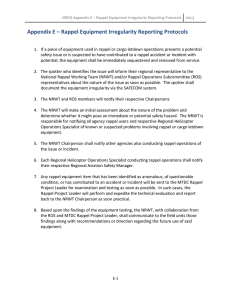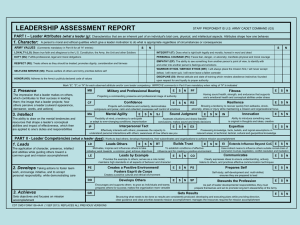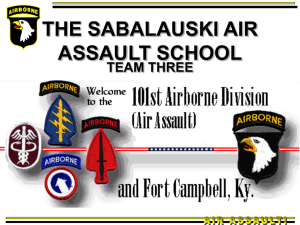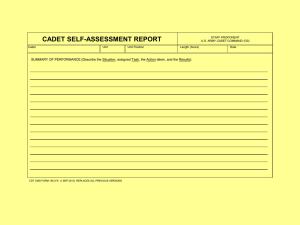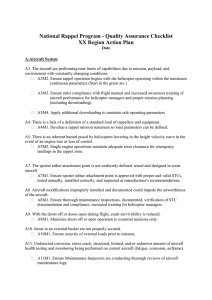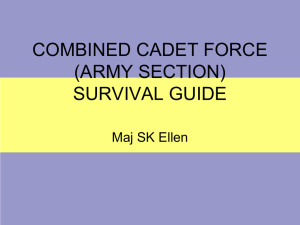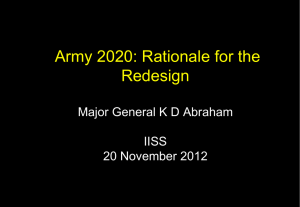Appendix 11 (Safety) to Annex C Operations
advertisement
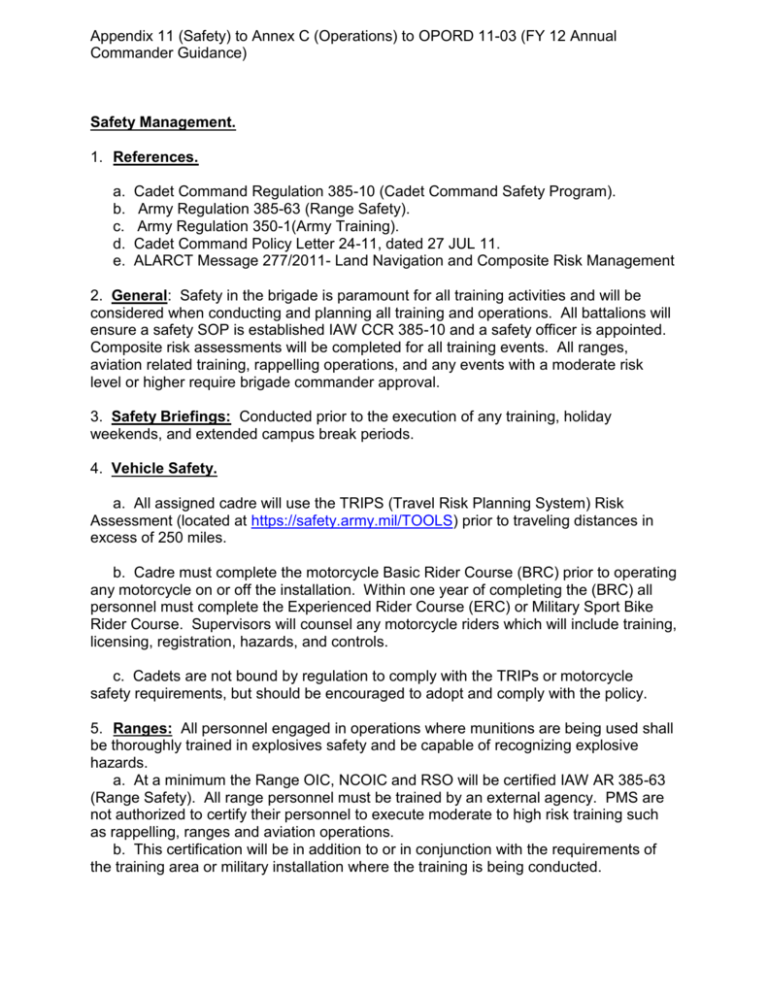
Appendix 11 (Safety) to Annex C (Operations) to OPORD 11-03 (FY 12 Annual Commander Guidance) Safety Management. 1. References. a. b. c. d. e. Cadet Command Regulation 385-10 (Cadet Command Safety Program). Army Regulation 385-63 (Range Safety). Army Regulation 350-1(Army Training). Cadet Command Policy Letter 24-11, dated 27 JUL 11. ALARCT Message 277/2011- Land Navigation and Composite Risk Management 2. General: Safety in the brigade is paramount for all training activities and will be considered when conducting and planning all training and operations. All battalions will ensure a safety SOP is established IAW CCR 385-10 and a safety officer is appointed. Composite risk assessments will be completed for all training events. All ranges, aviation related training, rappelling operations, and any events with a moderate risk level or higher require brigade commander approval. 3. Safety Briefings: Conducted prior to the execution of any training, holiday weekends, and extended campus break periods. 4. Vehicle Safety. a. All assigned cadre will use the TRIPS (Travel Risk Planning System) Risk Assessment (located at https://safety.army.mil/TOOLS) prior to traveling distances in excess of 250 miles. b. Cadre must complete the motorcycle Basic Rider Course (BRC) prior to operating any motorcycle on or off the installation. Within one year of completing the (BRC) all personnel must complete the Experienced Rider Course (ERC) or Military Sport Bike Rider Course. Supervisors will counsel any motorcycle riders which will include training, licensing, registration, hazards, and controls. c. Cadets are not bound by regulation to comply with the TRIPs or motorcycle safety requirements, but should be encouraged to adopt and comply with the policy. 5. Ranges: All personnel engaged in operations where munitions are being used shall be thoroughly trained in explosives safety and be capable of recognizing explosive hazards. a. At a minimum the Range OIC, NCOIC and RSO will be certified IAW AR 385-63 (Range Safety). All range personnel must be trained by an external agency. PMS are not authorized to certify their personnel to execute moderate to high risk training such as rappelling, ranges and aviation operations. b. This certification will be in addition to or in conjunction with the requirements of the training area or military installation where the training is being conducted. Appendix 11 (Safety) to Annex C (Operations) to OPORD 11-03 (FY 12 Annual Commander Guidance) c. Circumstances where the servicing installation for training does not provide verification of this training the PMS will provide a memorandum certifying the Range Officer in Charge and Safety Officer have been trained IAW AR 385-63. 6. Ammunition Transport: All drivers of vehicles that transport ammunition must be qualified IAW AR 600-55 (The Army Driver and Operator Standardization Program). 7. Rappel Training: Only certified Rappel Instructors are authorized to conduct rappel training. Current rappel masters and instructors certified at LDAC, LTC or brigade instructor courses meet this requirement. a. There are two appointed Brigade Rappel Masters who will certify additional personnel for the brigade. (1) MSG David Lykens (Comtek), U of MN Twin Cities, email: lyken004@umn.edu. (2) MSG Shawn Simmons (Comtek), U of Wisconsin Whitewater, email: simmonss@uww.edu. b. The brigade rappel masters will make recommendations to the Commander based on POI analysis of external brigade certifications (eg: Army Installations, Reserve and NG centers etc) to determine if the certification is IAW Cadet Command rappelling operations. c. Personnel must be certified annually to conduct operations. d. A copy of the rappel master's certification must accompany all rappelling risk assessments for Brigade Commander approval. e. All rappel training will be conducted IAW CCR 385-10 (Cadet Command Safety Program). f. Rappel Tower Inspection. CCR 145-3 provides requirements for Rappel Tower Inspection. Battalions should request that their university’s industrial engineering or safety staff perform the tower and load inspections to ensure proper certification of the anchor points. The Cadet Command Safety Alert 09-01 outlines requirements for tower inspection and load test requirements that must be met in order to certify a tower or structure for rappelling. Command funds cannot be used for inspection or maintenance of non-DA property or facilities. 8. Land Navigation. Use ALARCT 277/2011, Tab D (ALARCT) to Appendix 11 (Safety) when planning LN training. a. Implement the "building block" and "composite risk management methods" listed in FM 3-25.26. b. Conduct a thorough terrain reconnaissance before using a training area for land navigation. Look for dangerous terrain, heavily trafficked roads, water obstacles, wildlife and training debris. Include control measures as applicable in the risk assessment. 2 Appendix 11 (Safety) to Annex C (Operations) to OPORD 11-03 (FY 12 Annual Commander Guidance) 9. Risk Assessment Templates: Battalions will utilize the attached examples (Tab AB) as the standard templates. Units can add to the identified hazards and tailor to specific locations, but the assessment should contain the template information. a. Tab A (Rappelling Risk Assessment) is the template for all rappelling operations. b. Tab B (BRM) for all range operations. 10. Safety Course: All PMS and SMI must complete the online US Army Commander's Safety Course within 90 days of their assignment to the Brigade. Each battalion will appoint one Collateral Duty Safety Officer and they will complete the online US Army Additional Duty Safety Officer Course within 60 days of appointment 11. Ceremonial Cannon Firing. Battalion Commanders will ensure that all units firing ceremonial cannon cartridges adhere to Bartell Sends #7-10, 9 Sep 09, which can be found on the Cadet Command Right Site under the CG Sends link. 12. Cadre will ensure all safety equipment is issued and worn when using paintball or AirSoft weapons during ROTC training events. 3

